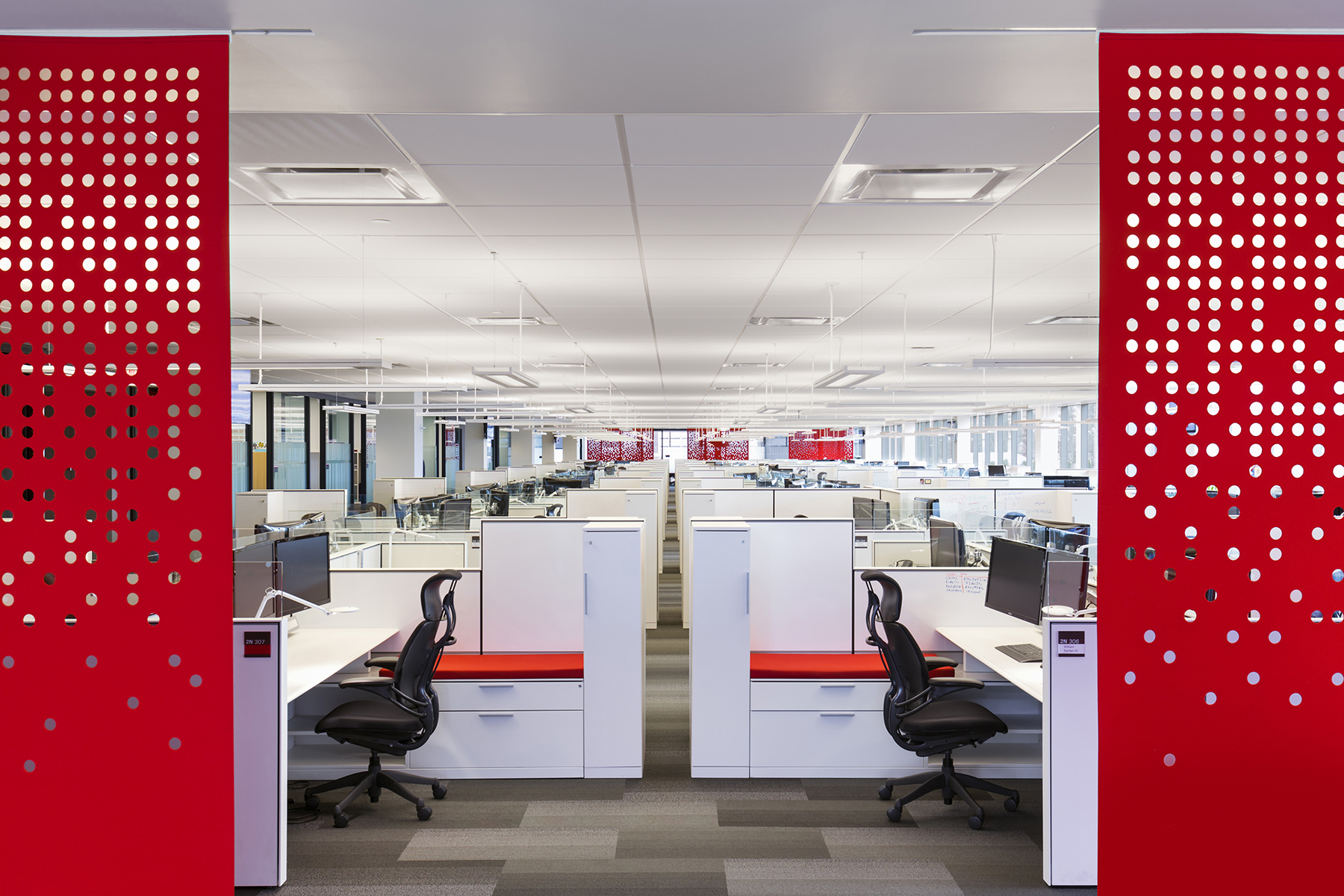Laser Accuracy. Low Cost. High Value.
On most of Torcon’s renovation and interior fit-out projects, we complete an initial laser scan to provide an accurate documentation of as-built conditions. These scans are easy to produce and, because they are completed by Torcon’s BIM staff with our own equipment, are relatively low cost. The value of working from a guaranteed accurate representation of existing conditions is significant for the entire project team. We can be assured of slab-to-slab heights, the location of remaining equipment or materials, and wall spacing throughout the project area, which aids in layout and coordination. The scan becomes Torcon’s background drawing for the coordination process with the various trades and serves as a quality check of the architect and engineers’ design documents. All issues are identified early and resolved early, in pixels, before they can significantly impact construction progress, project cost or quality.
Torcon’s BIM group recognizes the tremendous value of the data we collect on projects through our BIM-based coordination and with laser scans. We are continually seeking opportunities to use this information, such as migrating construction BIM data into a facility management system. We have also been able to use our laser scans to help our project teams work smarter by measuring conditions that have been identified as problematic.
Most modular glass wall and door partitions popular in today’s office and laboratory spaces have tight tolerances for floor flatness. To achieve the performance specifications necessary, many renovations will undergo a costly process called floor leveling. The floor’s high point is determined and a thin cement-like product is floated into the low spots, creating a level floor.
The data recovered from a laser scan is a full 360-degree point cloud. Our teams have “sliced” this data and created a model depicting all high points and low points in the floor. In essence, we create an interior topographical map. (see photo below). The data is used to calculate the necessary fill from any given benchmark, which is invaluable in collecting accurate and competitive pricing from floor leveling subcontractors. In competitive bidding, uncertainty represents risk, which is reflected in conservative (higher) bids.
Interior Topographical Map
Torcon’s ability to provide highly accurate information of how much area needs to be infilled is an essential advantage to our customers. Not only can we help generate more competitive pricing, but we are also able to identify less costly options. For example, rather than floating the floor up to its highest point, we can now accurately evaluate the highest points and locate them from an existing column line. This technique allows us the opportunity, with pinpoint accuracy, to chip away a select number of high points and reduce the amount of floated material, saving valuable time and funds. For one recent project, the floor scan provided sufficient information to bidders for the project to realize a 30% savings (budget to buy), with no additional scanning cost.
On another recent project, Torcon’s field team identified another use for a laser scan. Working on an urban brownfield site, Torcon was required to demo a number of small buildings, which generated several mounds of stockpiled material. After the material was tested, we scanned the stockpiles to generate an accurate understanding of the quantities to be exported from and imported to the site, which proved to be a powerful tool for the client and allowed the project to keep moving.


